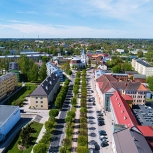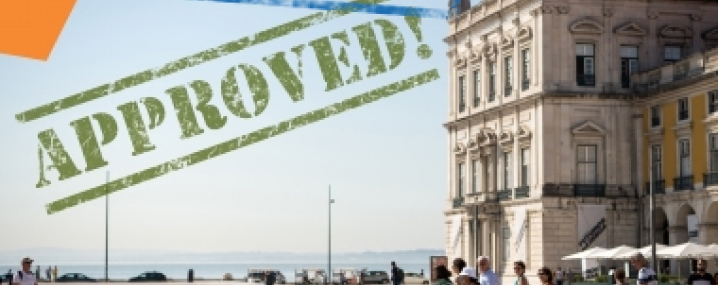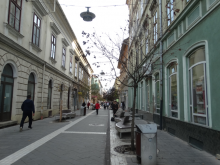
Valga
The municipality of Valga extends over 750 square kilometres and has an estimated population of 16,600 people. The population is mainly concentrated in the city of Valga, the centre of the municipality, villages and sparsely populated areas covering the rest of the territory. The municipality is proud of its pristine and untouched nature, rich historical and cultural heritage and authentic people.
Valga in Estonian side and Valka in Latvian side of the border were one a single town which was first mentioned in 1286 in the credit register of the city of Riga under the German name Walk. In the beginning of 20th century Valga was a large transport hub and the most rapidly growing city in Estonia.
With the independence of Estonia and Latvia, the issue of the location of the state border in Valga became the main strife between the two countries. Until 1920, Valga was in a situation where there was no specific state border and there seemed to be no good solution. The dispute was resolved by an international commission headed by British Colonel Stephen George Tallents who decided to divide the city between the two countries along the Varžupīte-Konnaoja Creek. As a result, the twin town Valga-Valka was born.
Nowadays Valga is a typical example of a shrinking city as it is located in the border region far from the capital cities. Due to population decline there is a surplus of all sorts of buildings - apartments, industrial and administrative buildings. As a result, only 72% of the town territory is currently in use.
Valga has a valuable historic town centre which is under State Heritage protection. However, the percentage of underused and abandoned buildings is much higher in the city centre than in the rest of the town as many people moved from the historical, mainly wooden apartment houses with poor facilities to newer ones built in Soviet time and the historical heart of the city has lost its former importance.
The priority of municipality is to adapt the urban space to declining population by demolition of excess and depreciated buildings and establishment of green spaces instead. Vacant, unused buildings contribute to a loss in property value and have a negative effect on citizens’ sense of attachment to the place and a trust in the town’s future. This results in civil apathy and low citizen involvement in town affairs.
As a shrinking town, Valga needs more than ever to be developed sustainably and should offer the kind of quality of life that makes people want to live in them and make businesses want to invest. To stop population decline, citizens of Valga need attractive environment to live, work and relax in. Well maintained public areas are important to ensure a future of healthy, attractive and vibrant towns for future generations.
The municipality is improving public urban space in central area of the city by constructing a new town square between the oldest streets in Valga and developing the new joint city centre linking Valga and Valka together. To improve physical connectivity between railway station and historical city centre it is necessary to modernize the streets so that they are comfortable for everyone to move around. As a small town we need to encourage smart mobility and develop walking-cycling oriented urban space.
Being part of the URBACT network “Space4People” allows us to learn from best practices and be inspired by other cities on how to successfully redesign the urban space and to find new innovative ways of public engagement in planning process.
SOME RELATED NETWORKS
Space4People
Article



